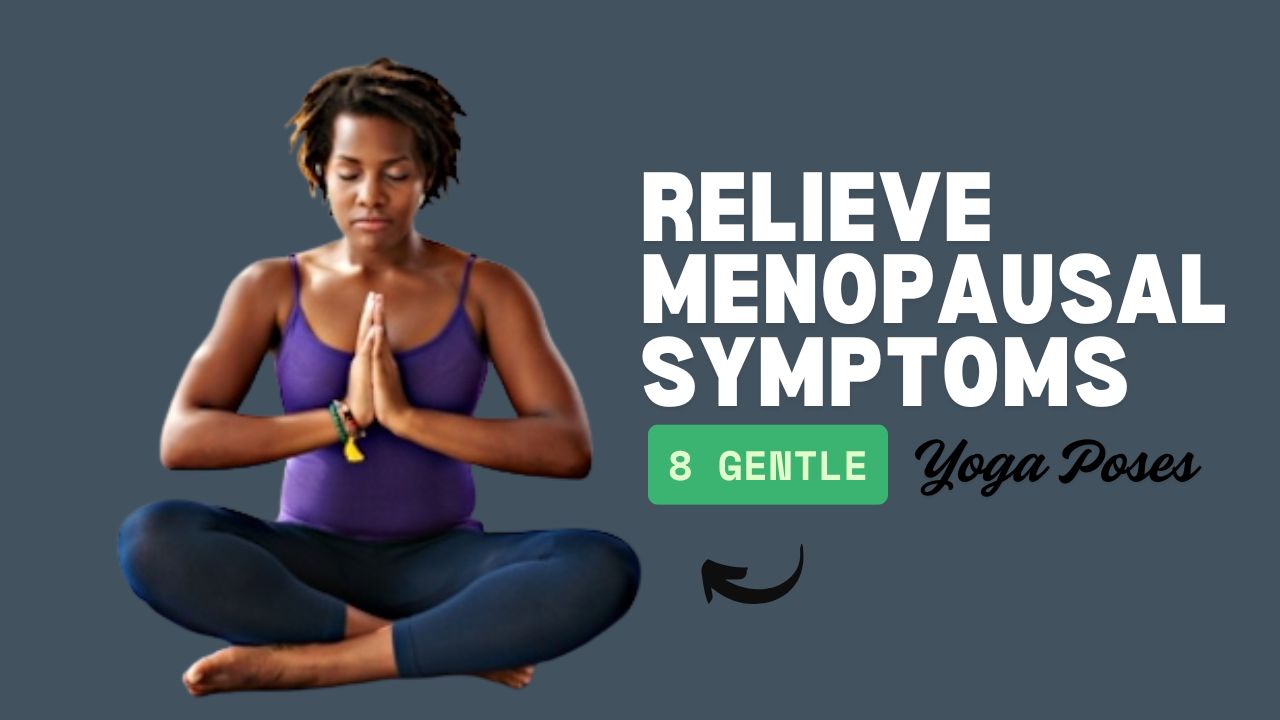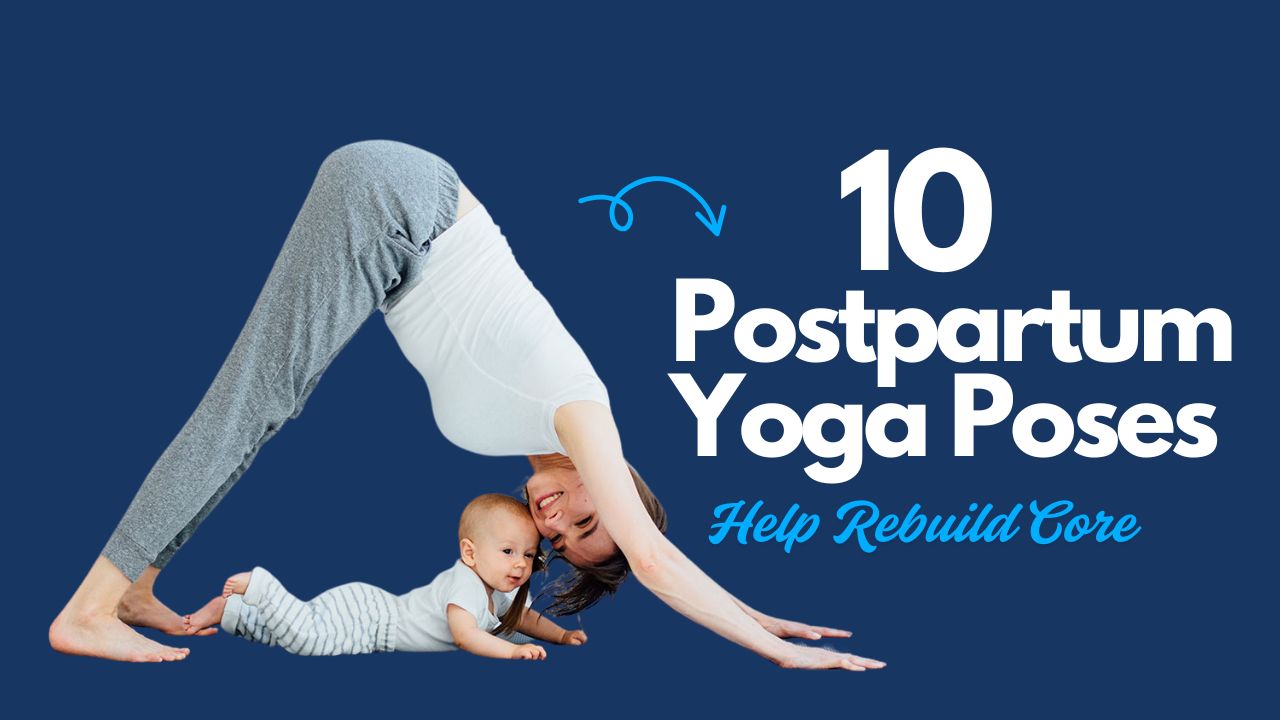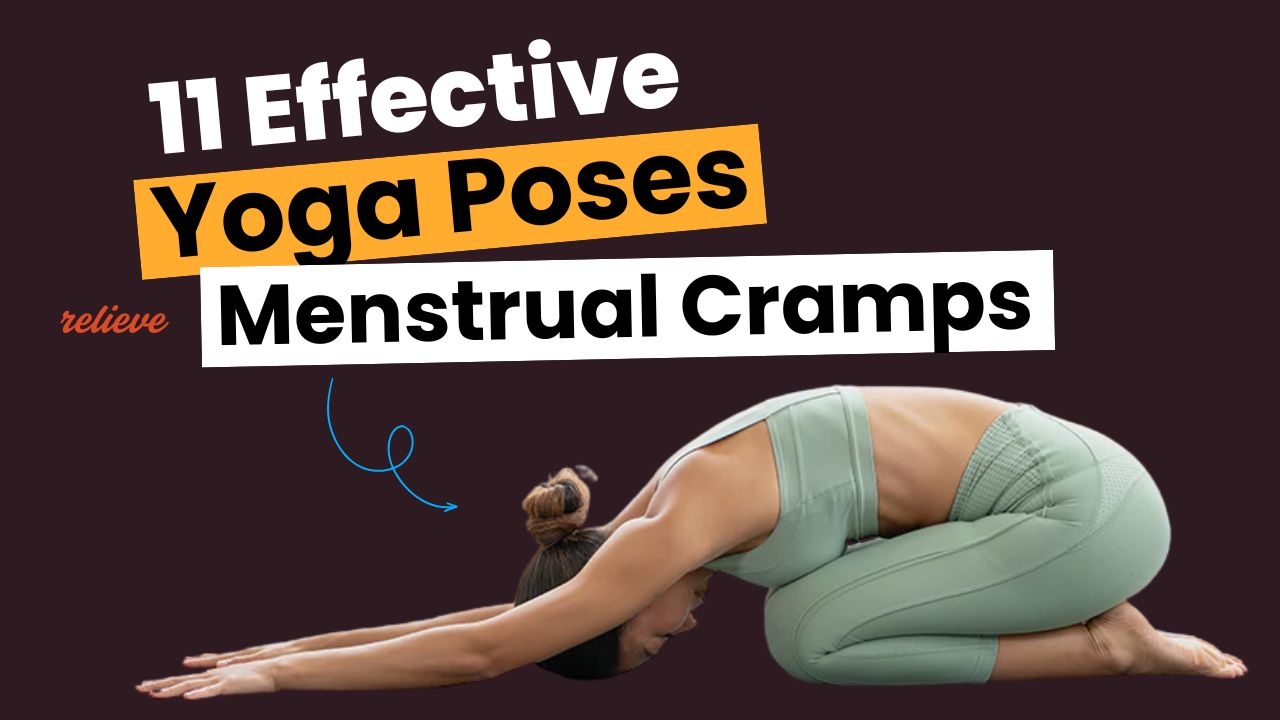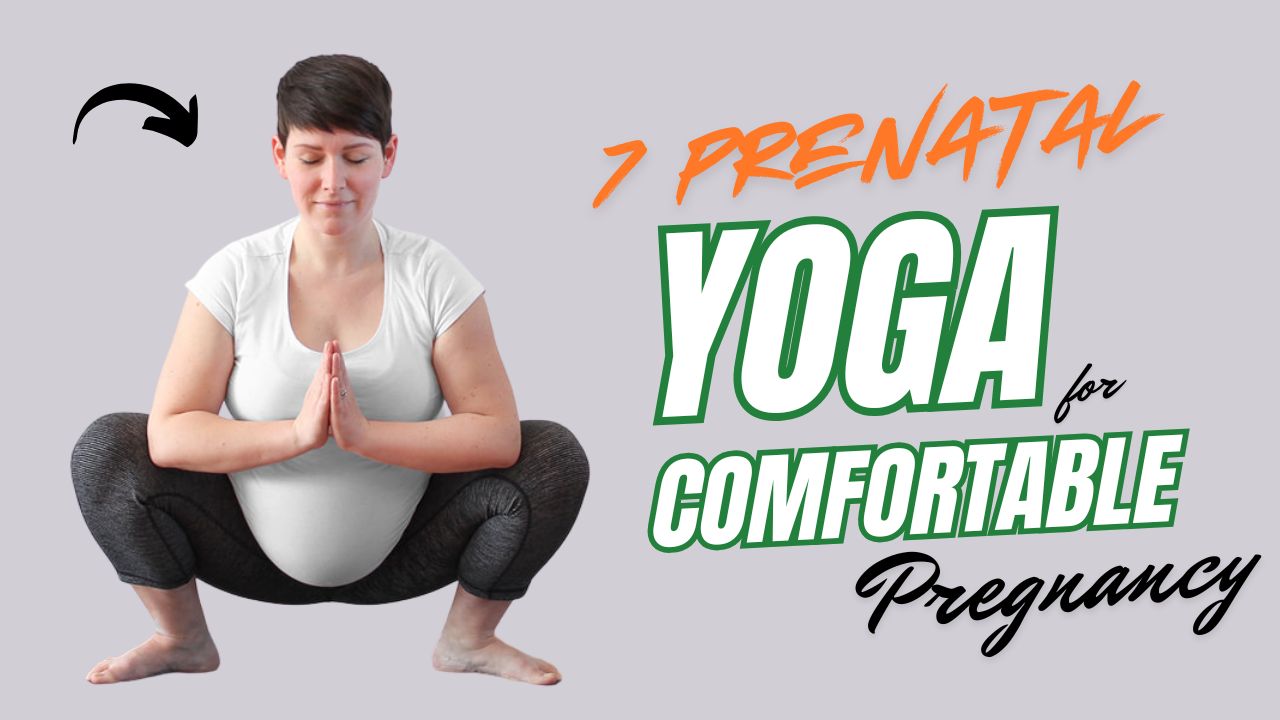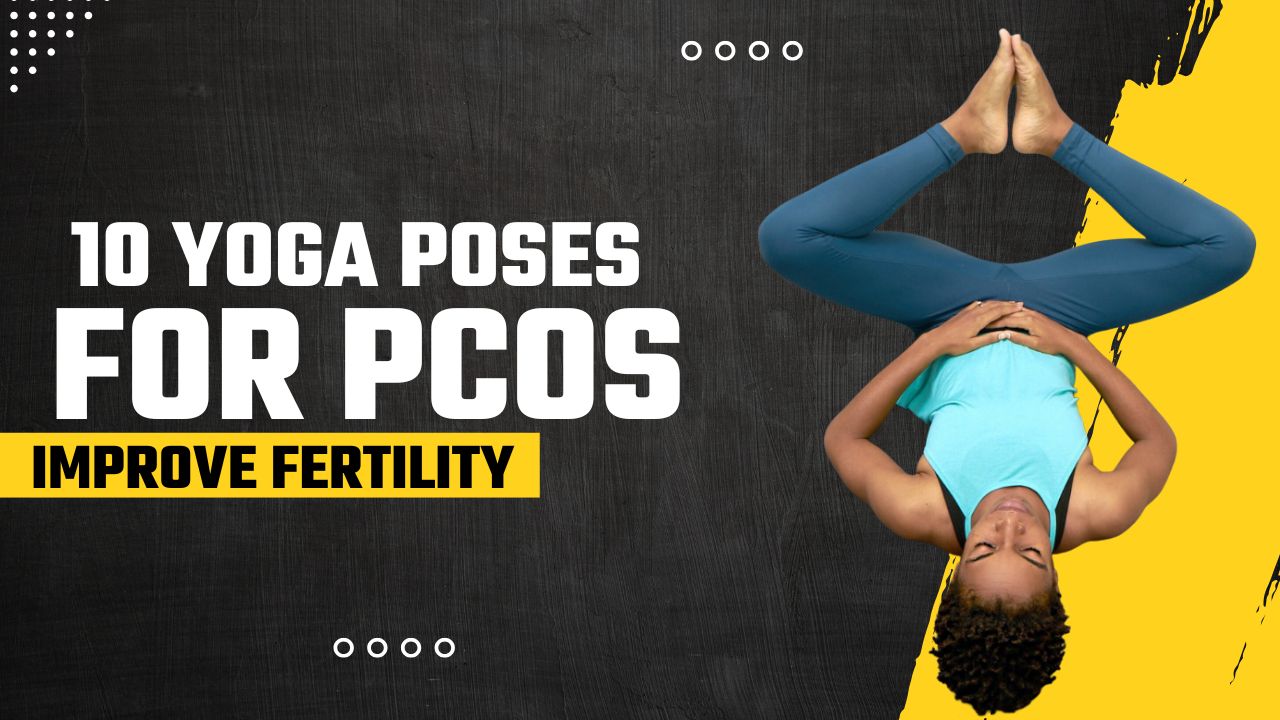Do you know that certain yoga poses can help balance hormones, regulate your cycle, and even boost fertility? For women struggling with PCOS (Polycystic Ovary Syndrome), this ancient practice may be one of the most effective natural approaches to restoring internal harmony.
Polycystic Ovary Syndrome is a hormonal disorder that affects 1 in 10 women of reproductive age. Irregular periods, weight gain, excessive hair growth, acne, and fertility issues are just a few of the challenges that come with it.
While medications can help manage symptoms, more and more women are turning to yoga as a natural and holistic tool to ease PCOS symptoms.
Unlike high-intensity workouts that may spike cortisol (stress hormone), yoga supports the nervous system, improves insulin sensitivity, and nurtures hormonal balance.
Even more, many poses stimulate the reproductive organs, enhance circulation to the pelvic area, and calm the mind—all essential for managing PCOS effectively.
Below, you’ll find 10 powerful yoga poses (asanas) that can be practiced daily or as part of a weekly flow. Each pose includes instructions and specific benefits for PCOS support.

Table of Contents
What Can Happen After 30 Days of Practicing Yoga for PCOS
| Positive Changes | Why It Happens |
|---|---|
| Improved menstrual cycle regularity | Yoga supports hormonal balance and stimulates reproductive organs |
| Reduced stress and anxiety | Deep breathing and mindful movement lower cortisol levels |
| Better sleep quality | Calming poses regulate the nervous system and promote restful sleep |
| Boosted energy levels | Gentle stretching and improved circulation enhance vitality |
| Enhanced digestion and reduced bloating | Certain poses stimulate abdominal organs and improve gut function |
| Increased body awareness and mindfulness | Regular practice promotes a deeper connection between mind and body |
| Subtle weight loss or reduction in belly fat | Improved metabolism and reduced insulin resistance contribute to fat regulation |
| Improved mood and emotional stability | Regular movement releases endorphins and helps regulate mood swings |
Do’s and Don’ts of Practicing Yoga for PCOS
| Do’s | Don’ts |
|---|---|
| Practice yoga consistently (at least 3–5 times a week) | Don’t expect instant results or a “quick fix” |
| Focus on slow, restorative poses that support hormonal balance | Don’t overexert with high-intensity yoga styles like power or hot yoga |
| Breathe deeply and mindfully during every pose | Don’t hold your breath or rush through poses |
| Use props like cushions, blocks, or straps for comfort and support | Don’t push your body into pain or discomfort |
| Listen to your body and modify poses when needed | Don’t compare your practice to others or force flexibility |
| Include poses that target the pelvis, abdomen, and spine | Don’t skip warm-up or cool-down stretches |
| Stay hydrated and maintain a balanced diet alongside yoga | Don’t rely on yoga alone for managing PCOS—holistic care is key |
| Consult your doctor or yoga therapist if you have other health conditions | Don’t perform deep inversions or intense backbends during menstruation or early pregnancy |
10 Best Yoga Poses To Improve Fertility
1. Supta Baddha Konasana (Reclining Bound Angle Pose)
How to Do:
- Lie on your back.
- Bring the soles of your feet together, letting your knees fall open to the sides.
- Place a cushion or yoga block under each knee for support.
- Rest your hands on your belly or by your side.
- Breathe deeply and hold for 3–5 minutes.
Why it Helps:
This deeply restorative pose stimulates the pelvic region, calms the nervous system, and encourages circulation to the ovaries—great for reducing stress and supporting reproductive function.
2. Bhujangasana (Cobra Pose)
How to Do:
- Lie face down with your hands under your shoulders.
- Press into your palms and lift your chest while keeping your elbows slightly bent.
- Keep your legs together and pelvis grounded.
- Hold for 30 seconds, breathing slowly.
Why it Helps:
Cobra pose helps stretch abdominal organs and improves blood flow to the ovaries. It also strengthens the back and reduces fatigue, often experienced in PCOS.
3. Setu Bandhasana (Bridge Pose)
How to Do:
- Lie on your back with knees bent and feet hip-width apart.
- Press feet into the floor and lift your hips.
- Clasp your hands beneath your back.
- Hold for 30–60 seconds.
Why it Helps:
Bridge pose boosts thyroid function, reduces anxiety, and improves pelvic circulation—supporting both hormone balance and fertility.
4. Dhanurasana (Bow Pose)
How to Do:
- Lie on your stomach.
- Bend your knees and grab your ankles.
- Inhale, lift your chest and legs simultaneously, creating a bow shape.
- Hold for 20–30 seconds.
Why it Helps:
This pose massages reproductive organs, improves digestion, and helps in hormonal regulation—making it highly beneficial for PCOS management.
5. Balasana (Child’s Pose)
How to Do:
- Sit on your heels and fold forward, bringing your forehead to the mat.
- Extend your arms in front or keep them by your sides.
- Breathe slowly and hold for 1–3 minutes.
Why it Helps:
Balasana is deeply calming. It helps reduce cortisol, alleviates lower back pain, and promotes mindfulness—all of which can ease PCOS symptoms.
6. Malasana (Garland Pose)
How to Do:
- Stand with your feet slightly wider than hip-width apart.
- Lower into a deep squat, bringing your palms together at your chest.
- Use your elbows to gently press your knees outward.
- Hold for 30–60 seconds.
Why it Helps:
This hip-opening pose stimulates abdominal organs, improves digestion, and activates pelvic muscles, which is excellent for reproductive health.
7. Naukasana (Boat Pose)
How to Do:
- Sit with your legs extended.
- Lean back slightly and lift your legs off the floor.
- Extend your arms forward, forming a “V” with your body.
- Hold for 20–30 seconds.
Why it Helps:
Boat pose strengthens the core, boosts metabolism, and helps burn abdominal fat—a common concern for women with PCOS.
8. Ustrasana (Camel Pose)
How to Do:
- Kneel with your knees hip-width apart.
- Place your hands on your lower back and lean back.
- Optionally, reach for your heels.
- Lift your chest and hold for 20–30 seconds.
Why it Helps:
Camel pose opens the chest and abdomen, stimulates the thyroid, and enhances blood flow to reproductive organs.
9. Viparita Karani (Legs-Up-The-Wall Pose)
How to Do:
- Sit sideways next to a wall.
- Swing your legs up against the wall as you lie down.
- Adjust your hips close to the wall and rest your arms beside you.
- Relax for 5–10 minutes.
Why it Helps:
This restorative inversion calms the nervous system, reduces inflammation, and enhances circulation to the pelvic region. It also helps regulate menstrual cycles.
10. Marjaryasana-Bitilasana (Cat-Cow Pose)
How to Do:
- Come onto all fours.
- Inhale, arch your back and lift your head (Cow).
- Exhale, round your spine and tuck your chin (Cat).
- Flow between the two for 1–2 minutes.
Why it Helps:
Cat-Cow improves spinal flexibility and stimulates the reproductive system. It also relieves tension and supports emotional balance—essential for PCOS management.
Final Thoughts
Yoga is not a quick fix, but a consistent practice can significantly reduce PCOS symptoms and improve overall reproductive health. These 10 poses are especially selected to target hormonal imbalances, stimulate the reproductive organs, and manage stress—all crucial factors when dealing with PCOS.
Important Tip: Always practice with mindfulness and modify poses according to your comfort. If you’re new to yoga or have specific health conditions, consider working with a certified instructor to ensure safety and alignment.
The best part? You don’t need to do all these poses every day. Even 20–30 minutes of mindful practice, a few times a week, can begin to make a difference over time.
Frequently Asked Questions (FAQs)
Is yoga really effective for managing PCOS?
Yes, yoga has been shown to be highly effective in managing PCOS symptoms. It helps regulate hormones, reduce stress, improve insulin sensitivity, and support emotional well-being—factors that directly impact PCOS.
Can yoga improve fertility in women with PCOS?
Yoga can play a supportive role in improving fertility by reducing stress hormones like cortisol, improving ovulation, increasing blood flow to the reproductive organs, and promoting hormonal balance—all of which are critical for conception.
How soon can I expect results from yoga if I have PCOS?
Every body responds differently, but many women start noticing improvements in mood, menstrual regularity, energy levels, and stress reduction within 4 to 8 weeks of consistent practice.
Do I need to do all 10 poses daily?
No. You can start with 3–5 poses and gradually build up to a complete sequence. What matters most is consistency and mindful breathing during practice.
Are there any poses that should be avoided during menstruation?
During your period, it’s best to avoid deep inversions and intense backbends. Focus instead on restorative poses like Supta Baddha Konasana and Child’s Pose, which support gentle relaxation and pain relief.
I’m a beginner—can I still do these yoga poses?
Absolutely. Most of these poses are beginner-friendly. Start slowly, use props (pillows, blocks) for support, and focus on breath and comfort rather than depth or flexibility.
Can yoga help with weight loss related to PCOS?
While yoga may not burn as many calories as high-intensity workouts, it boosts metabolism, reduces abdominal fat, improves digestion, and helps reduce food cravings—making it very helpful for sustainable weight management in PCOS.
What type of yoga is best for PCOS?
Gentle forms like Hatha Yoga, Yin Yoga, and Restorative Yoga are especially helpful. They support hormonal balance and stress reduction without over-stimulating the adrenal glands.
Can yoga help regulate my periods if I have PCOS?
Yes. Regular yoga practice can help regulate your menstrual cycle by stimulating endocrine function, improving ovarian health, and reducing insulin resistance, all of which contribute to more regular periods.
Is it safe to do these yoga poses during pregnancy if I have PCOS?
Some poses are safe during pregnancy, but modifications are necessary. It’s essential to consult your healthcare provider or prenatal yoga instructor before continuing any practice while pregnant.

